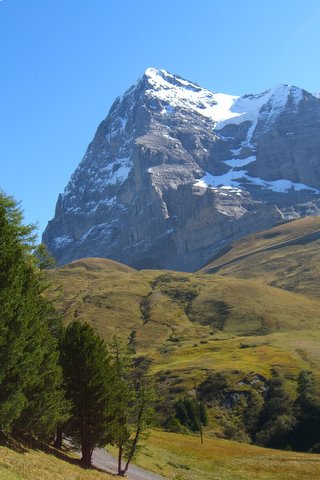A couple of days ago I did a hike that should have had spectacular views, and a sunny early morning held great promise. By the time I got out of the village and started gaining elevation low clouds had moved in. Bummer ...
On the way down (now facing the mountains across the valley) I noticed that parts of them were often visible between the clouds. I took a ton of pictures, discarded most, did minor edits on the survivors (Picassa "I'm feeling lucky" plus cropping) and posted the results here. Comments on all welcome!
My main reason for this post, however, is a specific question on zooming/cropping. I took a series of four photos of the Jungfrau gradually taking shape through the clouds, the sequence starts here and you can navigate (arrows on top of page) to the next three.
The first three contain a lot of foreground (my side of the valley); the last one was more zoomed then cropped to just show the mountain. Which is best?
Comments on any of the other photos obviously welcome! When back in the States I will explore options for a course that will allow me to take better photos next year.
On the way down (now facing the mountains across the valley) I noticed that parts of them were often visible between the clouds. I took a ton of pictures, discarded most, did minor edits on the survivors (Picassa "I'm feeling lucky" plus cropping) and posted the results here. Comments on all welcome!
My main reason for this post, however, is a specific question on zooming/cropping. I took a series of four photos of the Jungfrau gradually taking shape through the clouds, the sequence starts here and you can navigate (arrows on top of page) to the next three.
The first three contain a lot of foreground (my side of the valley); the last one was more zoomed then cropped to just show the mountain. Which is best?
Comments on any of the other photos obviously welcome! When back in the States I will explore options for a course that will allow me to take better photos next year.
Last edited:


